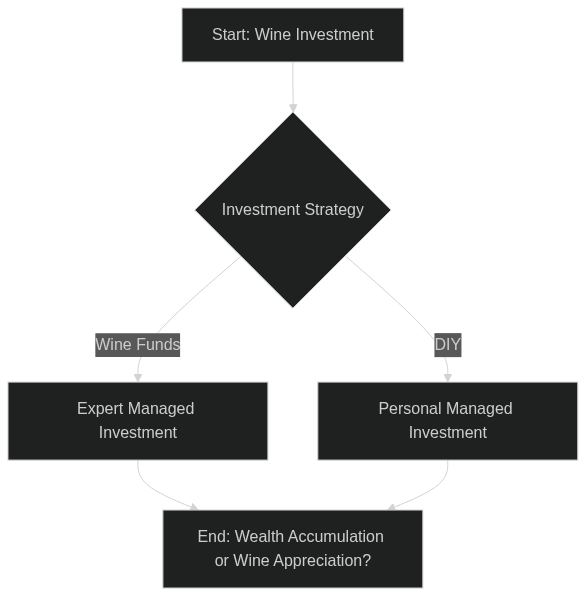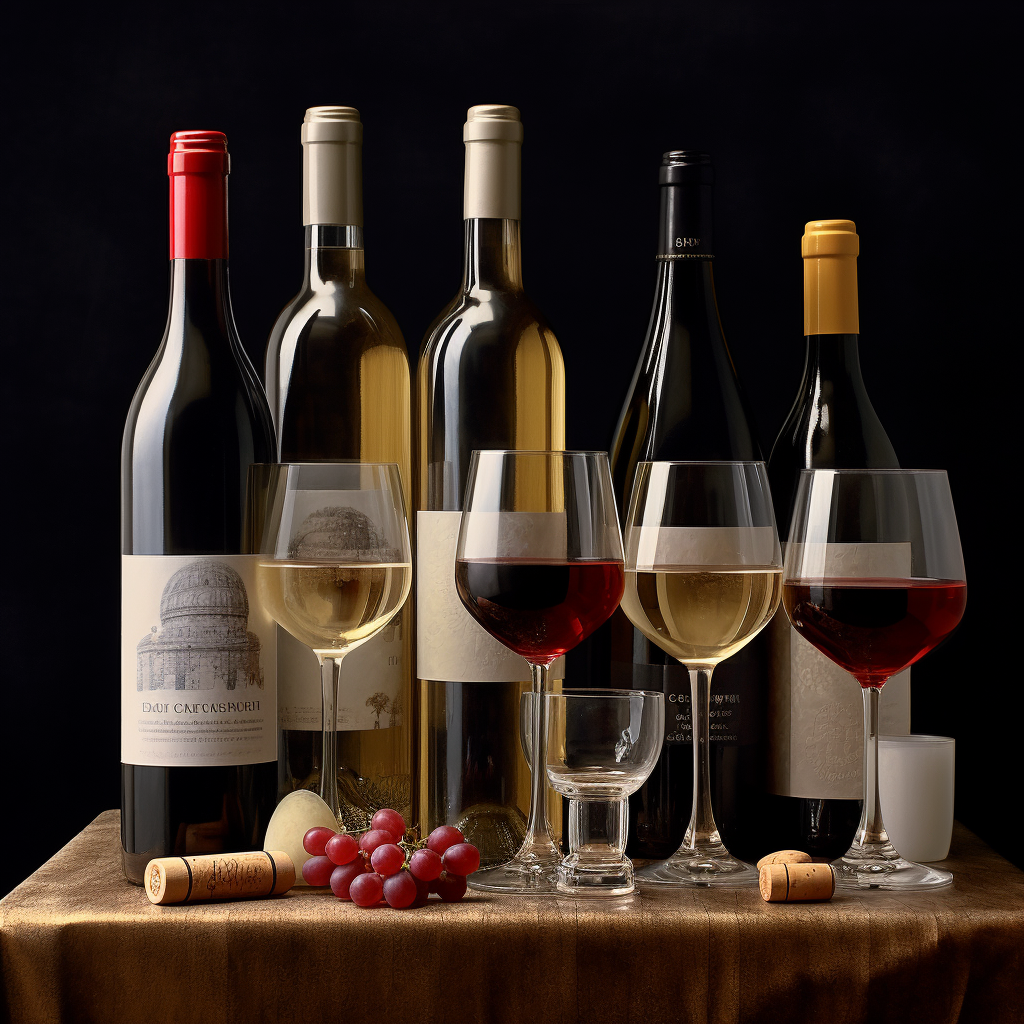The Graceful Path to Wealth: Wine Investment
Have you ever contemplated diversifying your investment portfolio with something sophisticated and enjoyable? Investing in wine presents such an opportunity. Wine, seen by many as a symbol of elegance and refinement, can also serve as a fruitful asset class, akin to stocks, bonds, or notable artworks. The charm of wine investment lies in its unique blend of aesthetic pleasure and financial gain. Instead of focusing on the volatile stock or bond markets, you have the chance to relish exquisite vintages, all the while seeing the value of your assets mature over time.
Wine Investment: A Long-term Journey
Investing in items like art, jewelry, and wine isn’t a shortcut to instant wealth. Instead, it’s a journey of appreciation, both in the monetary and sensory sense. Traditionally, wine collectors have filled their cellars with valuable bottles over many years, some of which may ultimately find their way to auction houses, generating a return on investment. This approach underscores the essence of wine investment—it’s a long-term game, where patience is a virtue, and the rewards are worth the wait.
Understanding the Dynamics of Wine Investment
The world of wine investment may initially seem intricate, but gaining a clear understanding of its dynamics can be rewarding. Wine prices don’t generally follow a linear trajectory. Instead, they experience short bursts of increased activity, making timing crucial when buying and selling fine wine in the short term.
However, short-term speculation can be risky and volatile. A more viable approach is a long-term investment strategy. Such a strategy carries a relatively lower level of risk compared to traditional investment avenues like stocks and bonds. The historical data also back this assertion. For instance, over the past two decades, fine wine has outperformed certain equity and fixed-income indexes, including the FTSE 100. A well-balanced wine portfolio, chosen with care, could yield annual returns of around 10-12%, and there’s always potential for even higher returns with the right picks.
Achieving a Rewarding Return on Investment (ROI)
Investment in fine wine primarily focuses on a select group of top-tier wines. This group consists of about 1,000 wines deemed suitable for professional investment. These wines enjoy the likelihood of finding buyers and are listed on online trading platforms like Live-Ex, BBX, and Cavex.
Leading the pack in this elite group are the Bordeaux First Growth vintages. Investors who identified their potential early have reaped significant profits. For instance, a bottle of Chateau Latour, which cost about $1500 in 2011, was worth about $6500 in 2022.
The wine investment market, however, is not static—it has diversified over time. Among the Live-Ex 1000, Burgundies now account for 150, and Champagne 100, with a surprising 50 from outside Europe. A standout performer has been Burgundies Domaine de la Romanée Conti, whose six wines have appreciated by 109% in value recently.
Wine Funds: A Conservative Approach to Wine Investment
Investing in wine funds offers a more cautious approach, particularly for those new to wine investment. Wine funds function similarly to mutual funds, requiring an initial investment, typically between $20,000 and $50,000. Fund managers handle the buying, holding, and selling of fine wine, with the profits returned to the fund.
For those who prefer a do-it-yourself approach, platforms like wine-searcher.com offer a great starting point. Here, you can access current prices and actively participate in
A Comprehensive Guide to Wine Investment: Enhancing Your Portfolio through Red and White Assets
Introduction
Wine, often perceived solely as a connoisseur’s delight or a celebratory drink, has emerged as an attractive asset class in recent years. This guide aims to provide comprehensive insights into the art of wine investing, showcasing its elegance, potential returns, and the rewarding journey it offers to investors.
The Allure of Wine Investment
Wine investment presents an engaging and sophisticated alternative to traditional investment avenues like stocks and bonds. The thrill of wine investing lies not only in its potential for financial gain but also in the allure of elegant collecting. It transcends the boundaries of mere trading and invites investors to savor the nuances of exquisite vintages while their assets appreciate in value over time.
The Long-Term Approach to Wine Investment
Investing in wine is not a pursuit for instant riches but a journey of appreciation and steady wealth accumulation. Comparable to other alternative investments like art and jewelry, wine is an asset that appreciates gradually. This process of slow and steady appreciation is a testament to the old adage: good things come to those who wait. Throughout history, wine collectors have assembled cellars teeming with valuable bottles, some of which have found their way to auction houses, enabling further acquisitions and fueling the cycle of wine investment.
The Investment Strategy: Timing and Risk Management
Investing in wine, especially for the short-term, can be a challenging venture. Wine prices do not rise linearly but undergo periods of significant upward activity. Consequently, timing is crucial when buying and selling fine wine in the short term. A well-planned and balanced wine portfolio can provide annualized returns of around 10-12%, outperforming some equity and fixed-income indexes over the past two decades. However, this pursuit is not devoid of risk and volatility, which underscores the importance of a thoughtful, longer-term investment strategy.

The Art of Choosing the Right Wine
The fine wine market primarily revolves around a select group of the finest wines. This elite group comprises around 1000 wines that are typically considered for professional investment. The Bordeaux First Growth vintages are particularly noteworthy, having yielded substantial returns for early investors. For instance, a bottle of Chateau Latour purchased in 2011 for about $1500US could be worth about $6500 in 2022. Moreover, Burgundies Domaine de la Romanée Conti, among others, have seen their value rise by 109% in recent years, demonstrating the potential profitability of wine investment.

The Route to Wine Funds: A Conservative Alternative
Investors seeking a more conservative approach can turn to wine funds, which offer expertly managed investments. Wine funds function similarly to mutual funds, with initial investments typically ranging between $20,000 and $50,000. Fund managers purchase, hold, and sell the finest bottles, and the gains are returned to the fund. Investors
who prefer a hands-on approach can leverage platforms like wine-searcher.com to keep up with current prices and engage in trading. This platform also presents an excellent opportunity to explore exceptional vintages, such as the renowned Bordeaux wines.
Conclusion: The Ultimate Challenge
With various options available for wine investment, collectors can operate at any level of investment. However, the greatest challenge that confronts every wine investor is the enticing dilemma of whether to save their precious bottles for further appreciation or to savor the exquisite flavors that these fine wines offer.

Investing in wine is not just about financial gains. It’s about embarking on a journey steeped in elegance, sophistication, and the allure of fine vintages. It’s about the joy of collecting, the thrill of the auction house, and the satisfaction derived from seeing a well-chosen wine portfolio appreciate over time. Whether you are a seasoned investor or a beginner, the world of wine investment holds exciting prospects that go beyond the traditional realm of asset classes, offering both a potentially rewarding financial venture and a delightful sensory journey.


Leave a Reply
You must be logged in to post a comment.